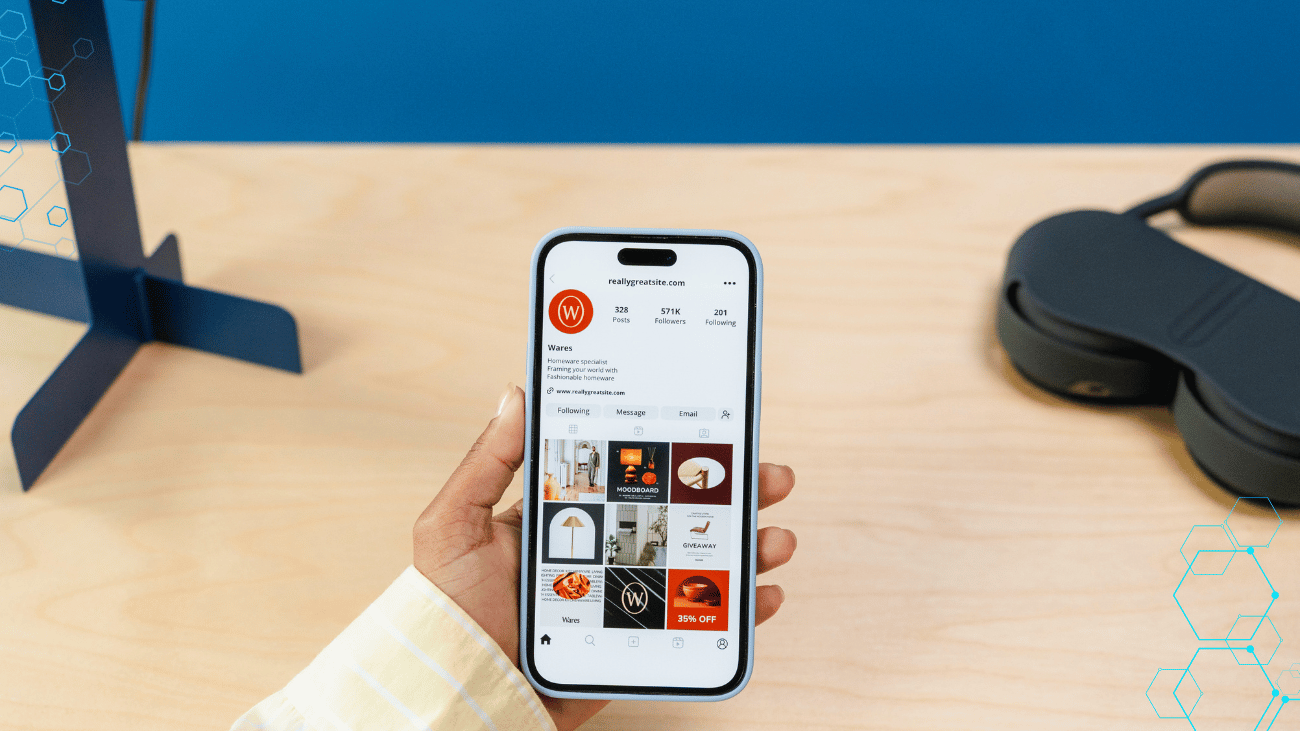Introduction to Blue Ocean Strategy
The concept of Blue Ocean Strategy, introduced by W. Chan Kim and Renée Mauborgne, revolves around the idea of creating untapped market spaces that offer opportunities for growth and innovation rather than competing in saturated markets, often referred to as red oceans. In traditional market dynamics, companies fight for dominance in highly competitive environments, striving to outperform rivals. Conversely, blue oceans symbolize unexplored territories where demand is created rather than fought for, emphasizing innovation as a primary driver of sustainable growth.
In the realm of digital marketing, adopting a Blue Ocean Strategy necessitates a shift in mindset from conventional tactics that simply aim to outperform competitors. Instead, businesses are encouraged to rethink their value propositions, focusing on unique offerings that meet the evolving needs of consumers. This strategic approach transcends typical digital marketing practices by looking beyond existing customer bases and exploring potential markets that have not yet been tapped. As Kim articulates, “The only way to beat the competition is to stop trying to beat the competition.” This quote encapsulates the essence of the strategy: instead of sinking resources into battles over market share, organizations should innovate and define new market spaces.
By applying Blue Ocean Strategy principles, companies can differentiate themselves through inventive digital marketing solutions that reach underserved demographics or leverage advanced technologies. Initiatives could include interactive content, personalized user experiences, and the integration of AI-driven analysis to uncover previously hidden customer insights. Thus, the emphasis lies not only in the competition but also in creating unique value propositions that resonate with target audiences in a meaningful way. This strategic shift can lead to sizable advantages, making the path to a blue ocean both an appealing and necessary venture in today’s dynamic market landscape.
Understanding Digital Marketing Landscapes
The digital marketing landscape has witnessed significant transformations over the years, evolving into a complex and competitive arena. Today, businesses not only aim to establish a robust online presence but also strive to effectively navigate through it. At the core of this landscape are various strategies, including search engine optimization (SEO), pay-per-click advertising (PPC), content marketing, and social media marketing. Each of these strategies plays a pivotal role in enhancing visibility and driving engagement.
SEO focuses on improving website visibility on search engines through both on-page and off-page techniques. This process is essential as it ensures a business ranks higher in search results, garnering organic traffic. Conversely, PPC provides an alternative approach, enabling companies to pay for visibility in search results and social media platforms, thus generating quick traffic. Both methods, while distinct, are integral to a comprehensive digital marketing strategy.
Another crucial aspect is content marketing, which aims to provide valuable information to engage potential customers actively. By focusing on storytelling and meaningful interactions, brands can build stronger relationships with their audience. Social media marketing further amplifies these efforts by leveraging platforms like Facebook, Instagram, and Twitter, enabling businesses to connect with users dynamically.
As organizations navigate these intricate waters, the importance of identifying saturated markets (often referred to as “red oceans”) versus potential new markets (“blue oceans”) becomes evident. The concept of blue ocean strategy encourages businesses to explore uncharted territories where competition is scarce, enabling them to innovate and capture new demand. Recognizing and differentiating these landscapes is vital for any business seeking sustainable growth in an ever-evolving digital ecosystem.
Identifying Blue Ocean Opportunities
In the realm of digital marketing, businesses must continuously strive to identify blue ocean opportunities—untapped market spaces that allow for innovation and significant growth. This involves assessing market conditions, understanding consumer behavior, and analyzing competitor weaknesses. The process can be approached systematically through several strategic steps.
Initially, companies should conduct a comprehensive market analysis to identify gaps. This can be achieved by utilizing various analytical tools that collect data on current consumer trends and preferences. Businesses should focus on understanding unmet customer needs, which may reveal segments of the market that are currently underserved. Through surveys, social media analytics, and feedback mechanisms, insights can be gathered to deepen understanding of what potential customers desire, yet do not currently receive in the marketplace.
Next, it is crucial to evaluate the competition. Analyzing competitor weaknesses can provide invaluable information regarding market saturation and areas ripe for exploration. Businesses should seek to identify what competitors are failing to deliver. This could range from inadequate customer service to a lack of innovative product offerings or poor online presence. Conducting a SWOT (Strengths, Weaknesses, Opportunities, Threats) analysis will further highlight potential blue ocean pathways that may be overlooked by rivals.
To reinforce this process, it is beneficial to illustrate the steps in a clear and engaging format. Below is a table summarizing the steps to identify blue ocean opportunities:
| Step | Action |
|---|---|
| 1 | Conduct market analysis to identify gaps and consumer needs. |
| 2 | Analyze competitors and pinpoint weaknesses. |
| 3 | Gather insights from customer feedback and interactions. |
| 4 | Develop strategies to leverage identified opportunities. |
By following these steps, businesses can effectively navigate the digital marketing landscape to uncover blue ocean opportunities, positioning themselves advantageously for future success.
Creating Value Innovation
Value innovation is a pivotal concept in the realm of digital marketing, distinguishing companies by their ability to deliver unique offerings that meet customer needs effectively. At its core, value innovation combines differentiation with low-cost strategies, enabling businesses to create products and services that are not only innovative but also resonate deeply with consumer desires. In an era where customer preferences evolve rapidly, aligning digital marketing strategies with these shifting desires is paramount.
One of the key aspects of value innovation is understanding and leveraging technology to design solutions that are distinct in the market. Successful companies, such as Apple and Tesla, exemplify how embracing technology can lead to groundbreaking products that redefine consumer expectations. Apple, for instance, revolutionized mobile communications through the iPhone by integrating functionality with user-friendly design, thereby creating a product that was not only a phone but also a versatile digital device. This strategic approach not only captured a substantial market share but also set new standards in the industry.
Additionally, the role of data analytics in digital marketing cannot be overstated. Businesses can harness big data to gain insights into customer behavior, preferences, and emerging trends. By utilizing these insights, companies can develop offerings that resonate more effectively, ultimately leading to increased customer satisfaction and loyalty. This alignment of products with customer desires is essential for standing out in a crowded digital marketplace.
Moreover, value innovation fosters a culture of creativity and continuous improvement, encouraging organizations to rethink their traditional business models. This adaptability allows companies to navigate unexplored waters and seize opportunities that may have been overlooked by competitors. By focusing on value innovation, businesses not only enhance their products and services but also create meaningful connections with their customers. This can ultimately lead to sustainable growth and a lasting competitive advantage in the digital marketing landscape.
Crafting a Blue Ocean Digital Marketing Strategy
Creating a blue ocean digital marketing strategy requires a thoughtful approach that prioritizes innovation and differentiation while focusing on untapped market spaces. The initial step involves defining your market segment. This segmentation should extend beyond traditional demographics and delve into psychographics, identifying consumer preferences and unmet needs. By recognizing unexplored niches, businesses can carve out opportunities that larger competitors may overlook.
Once market segmentation is established, organizations must zero in on their target audience. Targeting involves selecting specific segments to focus on, ensuring that marketing efforts resonate with potential customers. Utilizing tools such as buyer personas, businesses can gain insights into their ideal customer’s behavior, preferences, and challenges. This data-driven approach empowers marketers to tailor their messaging to effectively reach and engage their audience, further enhancing the chances for conversion.
Next, positioning is crucial in the blue ocean strategy. This entails crafting a unique value proposition that distinguishes your offerings from others in the market. A clear positioning strategy communicates the benefits and unique features of your services or products, creating a memorable brand presence. Emphasizing innovation or enhanced customer experiences can reinforce your brand’s value in the eyes of the target audience.
A well-defined call to action (CTA) is vital for guiding potential customers towards the desired action, whether that is a purchase, newsletter signup, or another form of engagement. The CTA should be clear, compelling, and contextual, encouraging users to take the next step in their customer journey. By integrating these strategic elements—segmentation, targeting, positioning, and a strong CTA—businesses can effectively navigate the blue ocean of digital marketing, ultimately leading to growth and success in previously uncharted waters.
Utilizing Tools and Technologies
In the realm of blue ocean digital marketing, leveraging the right tools and technologies is crucial for effectively navigating unexplored waters. Organizations must integrate a variety of digital solutions to refine their strategies and optimize performance. Comprehensive analytics tools are foundational, enabling businesses to gather and analyze data regarding consumer behaviors, preferences, and market trends. For instance, platforms like Google Analytics and Adobe Analytics offer deep insights into user interaction, which can help in identifying untapped market segments and crafting tailored marketing campaigns.
Automation tools are equally essential in facilitating efficient operations. Marketing automation platforms such as HubSpot and Marketo provide robust functionalities that allow marketers to automate email campaigns, social media postings, and lead nurturing processes. This creates a seamless experience for potential customers while significantly reducing manual workload. Moreover, these tools often come equipped with performance tracking features, which further enhances strategic adjustments and targeted outreach.
Customer relationship management (CRM) systems play a pivotal role in blue ocean strategies, allowing businesses to cultivate relationships with consumers and foster loyalty. Tools like Salesforce and Zoho CRM assist in managing customer interactions and streamlining processes associated with sales and support. This enhances client satisfaction and retention, which is crucial in establishing a strong presence in uncharted markets.
Additionally, organizations should consider integrating modern collaboration platforms such as Slack or Asana for internal team communications and project management. These tools empower teams to work collectively while allowing for real-time feedback, which is essential in swiftly adapting strategies to meet market demands.
For those seeking a more in-depth exploration of the technologies pertinent to blue ocean digital marketing, further reading is available through external resources like Digital Marketing Toolkit.
Case Studies: Successful Blue Ocean Marketing Campaigns
Exploring the transformative impact of blue ocean digital marketing strategies reveals numerous case studies that exemplify success in crowded markets. One such instance is the company Cirque du Soleil, which revolutionized the circus industry by crafting a unique experience that combined elements of theater and acrobatics. By eliminating the traditional aspects of a circus, such as animal acts and clowns, Cirque du Soleil attracted a new audience willing to pay premium prices for an elevated experience. This innovative approach not only differentiated them from competitors but also opened new revenue streams, leading to multi-million dollar success.
Another notable example is the software company Salesforce, which identified the demand for customer relationship management (CRM) tools during a time when traditional software models were dominating the industry. By offering a cloud-based solution, Salesforce targeted a market of small to medium-sized businesses looking for cost-effective, scalable options. Through its innovative business model and customer-centric services, Salesforce carved out a significant market share and has since become a leader in the CRM space.
Furthermore, the automotive brand Tesla stands out as a prime example of a blue ocean strategy in the electric vehicle sector. By prioritizing sustainability and advanced technology, Tesla distinguished itself from traditional car manufacturers who were slow to adapt to electric models. The brand not only introduced a new level of performance and luxury but also redefined consumer perceptions of electric vehicles. This successful integration of technology and luxury propelled Tesla to a significant position within the automotive industry.
These case studies illustrate critical learnings associated with blue ocean digital marketing strategies. Key takeaways include the importance of market differentiation, leveraging innovation, and understanding customer needs. By embracing these principles, companies can discover unexplored opportunities within their respective industries that lead to substantial growth and profitability.
Measuring Success: KPIs and Performance Metrics
In the realm of blue ocean digital marketing, measuring success is pivotal for understanding the effectiveness of various strategies employed in untapped market spaces. Key Performance Indicators (KPIs) and performance metrics serve as essential tools for marketers aiming to assess their progress and make informed decisions. These indicators provide quantifiable data that highlights the impact of marketing strategies, enabling businesses to adjust their approach where necessary.
One of the primary KPIs in blue ocean marketing is Customer Acquisition Cost (CAC). This metric helps businesses evaluate the cost-effectiveness of their marketing strategies by comparing the total expenses involved in acquiring new customers against the number of customers gained. A lower CAC indicates successful marketing efforts, particularly in new markets where traditional metrics may not apply as readily.
Another important performance metric is Customer Lifetime Value (CLV). This figure estimates the total revenue a business can expect from a single customer throughout their relationship with the company. By understanding CLV, marketers can optimize their strategies to focus on customer retention and develop personalized marketing campaigns that resonate with their audience.
Engagement metrics, such as website traffic, bounce rate, and social media interaction, are equally critical. These data points reflect how effectively a brand connects with its target audience in a blue ocean context. Maintaining a high level of engagement can indicate a successful outreach strategy in navigating unexplored digital territories.
Finally, conversion rates serve as a direct measure of success. This metric tracks the percentage of visitors who complete desired actions, such as making a purchase or signing up for a newsletter. It is particularly crucial in understanding the effectiveness of marketing campaigns aimed at encouraging specific user behavior.
By continually monitoring and analyzing these KPIs, businesses can ensure their blue ocean digital marketing strategies remain dynamic and adaptive, ultimately leading to sustainable growth and success in new markets.
FAQs About Blue Ocean Digital Marketing
Q1: What is the main difference between blue ocean and red ocean strategies?
The primary distinction between blue ocean and red ocean strategies lies in their approach to competition. Red ocean strategies focus on competing in existing markets, where the competitors fight for a limited pool of customers, often leading to price wars and dwindling profits. In contrast, blue ocean strategies aim to create new market spaces, rendering the competition irrelevant. This involves innovating and identifying unmet consumer needs, allowing businesses to operate in less contested waters, thus maximizing growth potential.
Q2: How do I identify my blue ocean opportunities?
To identify blue ocean opportunities, marketers should begin with thorough market research and consumer analysis. This involves mapping existing market conditions, understanding consumer pains, and exploring potential gaps in the offerings. Tools such as the Strategy Canvas can be beneficial for visualizing current competitor strategies versus where consumer satisfaction can be improved or redefined. Engaging directly with customers through surveys or focus groups can also illuminate specific needs that remain unaddressed.
Q3: Can small businesses benefit from blue ocean strategies?
Absolutely. Small businesses often possess the agility and creativity needed to explore and implement blue ocean strategies effectively. They can leverage their unique offerings, focusing on niche markets that larger competitors may overlook. By doing so, these small enterprises can carve out a distinctive position in the marketplace, allowing them to thrive on innovation without the burden of traditional competition.
Q4: What are some common pitfalls to avoid?
Common pitfalls in blue ocean strategies include the failure to align resources effectively for innovation, inadequate understanding of the target market, and losing sight of operational execution. Additionally, businesses should be cautious of overcomplicating their value proposition, as it may lead to consumer confusion. Maintaining agility while ensuring consistency in messaging and branding is crucial for success.
Q5: How do I adapt my existing digital marketing plan to blue ocean principles?
Adapting an existing digital marketing plan to blue ocean principles involves re-evaluating and revising the customer segmentation and targeting approach. Businesses should focus on creating unique value propositions and emphasizing innovative solutions that address customer pain points. Furthermore, leveraging content marketing and social media channels effectively can help generate awareness and interest in new offerings, thereby attracting a clientele eager for distinctive solutions.


 Cart is empty
Cart is empty 



